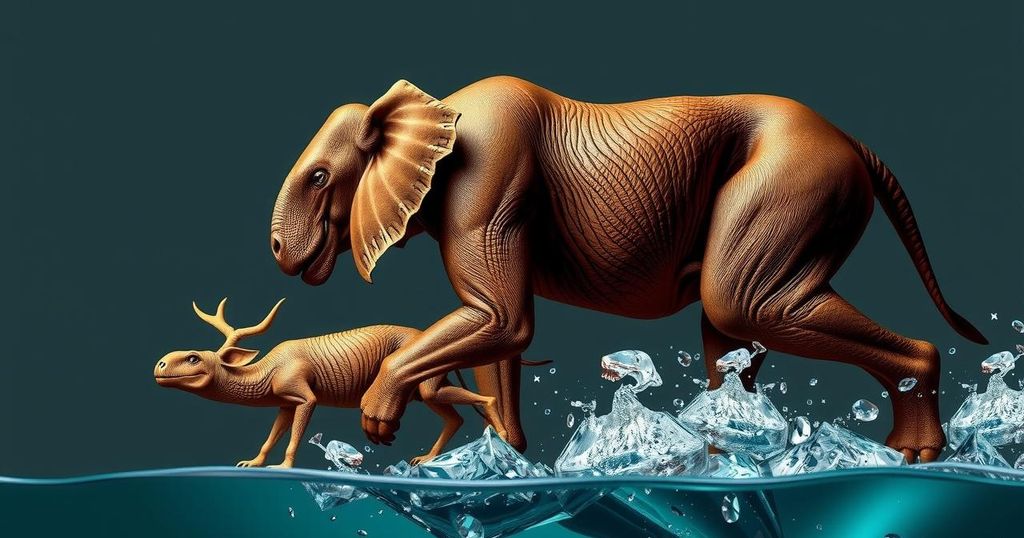The Helmeted Water Toad, a “living fossil” in Chile, faces extinction due to climate change and human encroachment, marking a 30% population decline since 1990. Amphibians are the most endangered animal group, with global extinction rates rising alarmingly. Amid this crisis, biotech firms like Colossal Biosciences are exploring the revival of extinct species such as the woolly mammoth and Tasmanian tiger, igniting debates on conservation versus de-extinction.
The Helmeted Water Toad (Calyptocephalella gayi) in Chile faces a severe threat of extinction, not from ancient predators, but due to human activity and climate change. This species, which once coexisted with dinosaurs, has seen its population decline by 30% since 1990, resulting in its classification as “vulnerable” by the International Union for Conservation of Nature (IUCN). Melissa Cancino, founder of Proyecto Anfibia, expressed her anguish over the plight of this amphibian that uniquely survived millions of years. The situation parallels a broader crisis, as amphibians are now recognized as the most endangered group, with one-third of the 6,300 species at risk globally due to habitat loss, pollution, and diseases exacerbated by climate change.
Experts predict that mass extinction could soon impact a million species, comparable to the event that led to the dinosaurs’ demise 66 million years ago. Current extinction rates, driven by deforestation, pollution, and climate change, are alarming; however, there is a burgeoning movement towards de-extinction. Biotech firm Colossal Biosciences is working to revive species such as the woolly mammoth and the Tasmanian tiger using advanced genetic techniques. Some scientists advocate for the revival of these species to restore ecological balance, arguing that their absence contributes to deterioration within ecosystems. Meanwhile, debates continue regarding the prioritization of conservation efforts versus investment in de-extinction science, as each approach carries its merits and concerns.
The article discusses the critical status of the Helmeted Water Toad, a species native to Chile, as it recently became classified as vulnerable due to human impact on its environment. The broader context includes the alarming rate of amphibian extinction globally and the escalating threats faced by numerous species across different taxa. Additionally, it introduces the counter-movement of de-extinction, where scientists aim to revive extinct species through genetic technologies, thereby sparking ethical and ecological discussions about how to best approach conservation in the face of mass extinction.
In conclusion, the plight of the Helmeted Water Toad signifies a profound loss in biodiversity attributed to human actions, underscoring the urgent need for conservation efforts. The ongoing debate between focusing on preserving current endangered species and investing in de-extinction technology reflects a complex understanding of ecological restoration. Ultimately, whether through conservation or innovative revival methods, the responsibility lies with humanity to ensure the survival of our planet’s diverse life forms.
Original Source: americanbazaaronline.com






